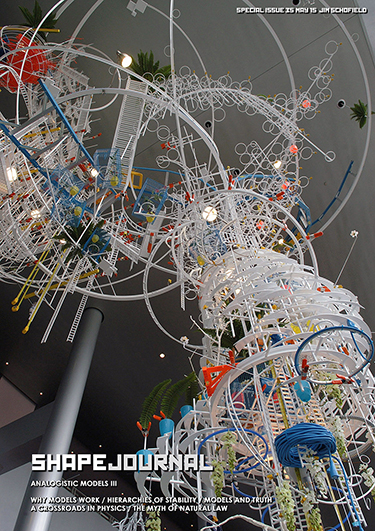
The Team
Jim Schofield - Editor
Physicist, Philosopher, Marxist, Multimedia Expert, Mathematician, Author, Sculptor.
Dr. Peter Mothersole - Editor
Senior Lecturer in Computing, Physicist, Photographer, Constructivist, Software Developer, Philosopher.
Mick Schofield - Art Director
Graphic Designer, Writer, Photographer, Music Producer,
Digital Artist, Webmaster |
|
|
|
SHAPE Special Issue 35
Analogistic Models III
1. Introduction
2. Why Analogistic Models Contain Significant Content
3. Hierarchies of Stability and their Inevitable Dissolutions
4. Models and Truth
5. At the Crossroads: The Current Crisis in Physics
6. The Myth of Natural Law
Read PDF (Right click link to Download)
Comment on this Issue
PREVIOUS - Analogistic Models II
Editorial
Welcome to the 35th Special Issue of the SHAPE Journal and the third and last instalment of our series on Analogistic Models - at least for the time being.
This continued study addresses the making of explanatory models of real-world situations as a means of furthering the understanding of studied areas, and contrasts explanatory models based upon analogy (Analogistic or Analogical Models as they are sometimes known) with those purely quantitative models, based on form alone.
Scientists and Mathematicians build these latter models using data gathered from situations farmed to produce particular relations, but not Natural Laws as is often claimed. The relations extracted are restricted only to those carefully farmed and maintained, non-natural situations.
The use of analogical models offers an alternative approach. There is a sound philosophical basis for analogistic modelling, based upon the discoveries of Hegel 200 years ago, which have been brought to the heart of these discussions, due to significant developments in both experimental methods and in holisitic theories in science.
Jim Schofield
MAY 2015
|
|
|




